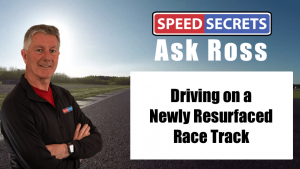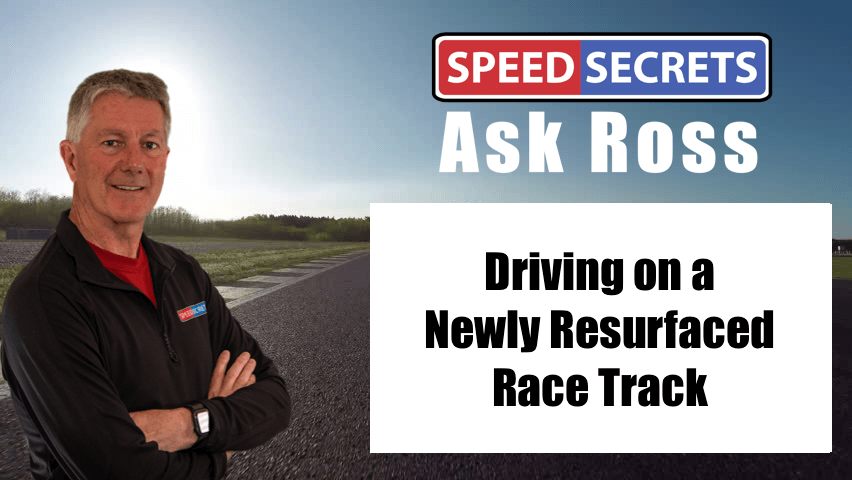 Q: “I’m racing at Laguna Seca in July, shortly after the resurfacing. I’ve never raced on new pavement before. What driving techniques change with new pavement?”
Q: “I’m racing at Laguna Seca in July, shortly after the resurfacing. I’ve never raced on new pavement before. What driving techniques change with new pavement?”
A: Im kinda jealous that you’re getting to drive the “new Laguna” before me! I bet it’s going to be awesome. And with Road America freshly resurfaced, and Mid-Ohio having it done later this year, this is a timely question.
A few thoughts…
- Generally, the line doesn’t change much unless there was a patch or something that had even less grip than everywhere else before the repave. In my experience, the grip level goes up equally, everywhere. But, for example, Laguna had patched a piece in Turn 11, and it had more grip. It was a bit off line, so you couldn’t use it much, but it did have more grip. So, rather than considering using it, you won’t because there will be more grip on the normal line.
- Often, when the surface is brand new, it doesn’t have much more grip than the old surface because it needs to “bleed” out the oils in the asphalt and get a bit of rubber embedded in the track. I don’t know how much of that will have happened by the time you drive there, but you may find that it gains grip throughout your event – and even for the next few weeks.
- Pay attention to the curbs. When they resurface a track, sometimes the relationship of paved surface to concrete curbs change from what you’re used to. That may mean that you can or can’t use some curbs you could in the past, or use some that you couldn’t in the past. Test them out.
- From what I understand, the width and elevation changes have not been changed at all. However, if you have many laps at Laguna, you need to explore and test to see if there are subtle changes that can be used to your advantage.
- The driver with the most references usually wins. In most cases, they drive faster, more consistently. So, a main focus should be on collecting and storing in your mental database the most references. Some of these are visual – things you see on the track surface, just off to the side, and in the distance. But some are things you feel and hear. Pay attention to these. In fact, make one of your first sessions solely focused on gathering references. And it’s important to write/note/draw them down on a track map. The more you can add to the map, the better.
- Use the Sensory Input Sessions that I’ve written about elsewhere (here in past Ask Ross posts, or in my books), where you focus solely on taking in more visual, kinesthetic and auditory information. Ultimately, that is what learning a track is all about, and driving a newly-resurfaced track is like learning a new track.
- As far as specific technique changes, I doubt there will be many, if any. The timing might change a bit, but if you trail braked into a corner in the past, you’ll probably do the same on the new surface. The amount of trail braking might change a bit, but it’s not like you’ll use a completely different technique.
- I suspect how you prioritize the corners will not change, either. Even your overall strategy for the track and its individual corners will not change.
- When Watkins Glen was resurfaced a few years ago, even the best drivers took some time getting used to just how much grip the track had (a lot!). At first, it was hard to believe how quick a car could be driven through the Carousel, for example. So, be prepared to use the extra grip. I don’t know what kind of asphalt they used to resurface Laguna, but the grip level might have gone up a lot, or just a little. You need to feel it out to learn what you can do. I’d suggest focusing on corner minimum speed, rolling more and more mid-corner speed until you learn what the track will take. Test the limits.
- I also suggest watching your best in-car video, then imagine what you’d do with 10% more grip. Really take the time to visualize driving Laguna with that much more grip.
As always, have fun using the extra track grip!

